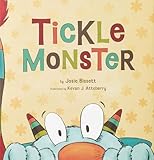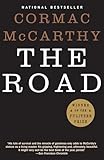It’s been a number of years since my last installment of “Are Picture Books Leading Our Children Astray?” — and the reason is simple: I’d come to feel that a reassuring majority of picture books were not, in fact, leading our youth to ruin. I was finally able to sit in my cozy parlor, mug of chamomile in hand, and allow myself to relax. Perhaps my success in exposing the most egregious examples of malevolent kiddie-lit — Blueberries for Sal, Caps for Sale, Curious George Flies a Kite — had led me to believe that my duty had been fulfilled. Perhaps I simply became complacent. Whatever the reason, I’ve recently discovered — with an audible gasp — that the polluted river of wicked picture books has been flowing as strongly as ever. A new crop of titles has until now escaped my benevolent, if Sauron-like gaze — and in so doing, have tainted our tots with narratives of untold madness and perfidy. Here are four of the very worst offenders:
The Day the Crayons Quit
 This grim tale of workplace discontent is put into motion when a boy named Duncan finds that his crayons have collectively “quit” — each of them, from red to blue to orange, outlining his grievance via outrageously self-pitying letter. Beige doesn’t like to draw wheat, Black feels misused, Gray is exhausted, and on and on. While the question of how Duncan’s crayons gained such frightful sentience must be addressed, the most salient matter is this: Have these crayons seen the condition of today’s economy? Had they deigned to pay heed to the steady erosion of secure, well-paying jobs, they might not have so blithely run from their carton. The Day the Crayons Quit teaches children that it’s not only wise, but noble, to walk off the job on a whim — because you don’t like being used to draw whales or seas or fire trucks. This book will no doubt produce a generation of adults who, decades hence, will up and quit because they don’t like the coffee in the breakroom or the pens in the supply closet — and wind up penniless, without prospects, swilling rotgut hooch in a trash-strewn gutter. And all the while moaning, of course, about the unfairness of it all.
This grim tale of workplace discontent is put into motion when a boy named Duncan finds that his crayons have collectively “quit” — each of them, from red to blue to orange, outlining his grievance via outrageously self-pitying letter. Beige doesn’t like to draw wheat, Black feels misused, Gray is exhausted, and on and on. While the question of how Duncan’s crayons gained such frightful sentience must be addressed, the most salient matter is this: Have these crayons seen the condition of today’s economy? Had they deigned to pay heed to the steady erosion of secure, well-paying jobs, they might not have so blithely run from their carton. The Day the Crayons Quit teaches children that it’s not only wise, but noble, to walk off the job on a whim — because you don’t like being used to draw whales or seas or fire trucks. This book will no doubt produce a generation of adults who, decades hence, will up and quit because they don’t like the coffee in the breakroom or the pens in the supply closet — and wind up penniless, without prospects, swilling rotgut hooch in a trash-strewn gutter. And all the while moaning, of course, about the unfairness of it all.
I Want My Hat Back
 Imagine, for a moment, that you had an item of clothing that was dear to you. For some, it might be a blouse gifted by a doting grandparent. For others, it might be a brother’s hand-me-down parka. For still others, it may be a hat — say, an oddly featureless, triangular red cap. Now imagine that this hat was stolen from you. Certainly, the loss of a beloved item of clothing would be disappointing; saddening, even. But in a rational world, you move on. You remember the hat fondly, get soft around the eyes whenever it comes to mind. What you do not do is seek out and murder the thief in a fit of dead-eyed, Bronsonesque revenge. Or eat the body afterwards, to hide the evidence. Yet that is exactly the scenario laid out in I Want My Hat Back, in which a sociopathic bear kills and feasts upon the rabbit who has stolen his precious hat. Is this a vision of the world we want to pass along to our children? If your son’s Thomas train is pilfered by a neighbor, should his response be worthy of latter-day Liam Neeson? If your daughter’s Sofia doll is suddenly snatched away, should she respond with cannibalism? Sadly, the answer given by the grisly I Want My Hat Back is a resounding, blood-spattered “yes.”
Imagine, for a moment, that you had an item of clothing that was dear to you. For some, it might be a blouse gifted by a doting grandparent. For others, it might be a brother’s hand-me-down parka. For still others, it may be a hat — say, an oddly featureless, triangular red cap. Now imagine that this hat was stolen from you. Certainly, the loss of a beloved item of clothing would be disappointing; saddening, even. But in a rational world, you move on. You remember the hat fondly, get soft around the eyes whenever it comes to mind. What you do not do is seek out and murder the thief in a fit of dead-eyed, Bronsonesque revenge. Or eat the body afterwards, to hide the evidence. Yet that is exactly the scenario laid out in I Want My Hat Back, in which a sociopathic bear kills and feasts upon the rabbit who has stolen his precious hat. Is this a vision of the world we want to pass along to our children? If your son’s Thomas train is pilfered by a neighbor, should his response be worthy of latter-day Liam Neeson? If your daughter’s Sofia doll is suddenly snatched away, should she respond with cannibalism? Sadly, the answer given by the grisly I Want My Hat Back is a resounding, blood-spattered “yes.”
I Will Surprise My Friend!
 On its surface, the Piggie and Elephant series seems fairly benign: a bespectacled elephant named Gerald and a flighty pig named (appropriately enough) Piggie banter about through a string of mild capers: hiding from one another, playing in the rain, becoming annoyed when birds nest upon their heads. Standard kid stuff, really. But lurking beneath this silliness is a simmering sexual tension that cannot be ignored. Gerald is male; Piggie is female. At best, their 22-book-long platonic friendship gives children a grievously false view of such relationships. Because eventually, Gerald, stumbling home from the bar, will pour out his heart to Piggie in a desperate, rambling slur — only to be crushed beyond all recognition when she winces and shakes her head. Or worse: Piggie will flutter her lashes, clasp her hooves, and say that she, too, harbors such feelings. Now, you may think I’m overanalyzing the whole Elephant-and-Piggie affair, that I’m being hysterical. But have you ever seen an elephant trying to mate with a pig? Because I have, and it’s not something that one can soon forget. Oh, no. The image tends to stencil itself upon the soul. So, Mo Willems, I beg you: if you must continue to produce these books, please keep Elephant and Piggie far, far apart from one another. For the good of the children, naturally.
On its surface, the Piggie and Elephant series seems fairly benign: a bespectacled elephant named Gerald and a flighty pig named (appropriately enough) Piggie banter about through a string of mild capers: hiding from one another, playing in the rain, becoming annoyed when birds nest upon their heads. Standard kid stuff, really. But lurking beneath this silliness is a simmering sexual tension that cannot be ignored. Gerald is male; Piggie is female. At best, their 22-book-long platonic friendship gives children a grievously false view of such relationships. Because eventually, Gerald, stumbling home from the bar, will pour out his heart to Piggie in a desperate, rambling slur — only to be crushed beyond all recognition when she winces and shakes her head. Or worse: Piggie will flutter her lashes, clasp her hooves, and say that she, too, harbors such feelings. Now, you may think I’m overanalyzing the whole Elephant-and-Piggie affair, that I’m being hysterical. But have you ever seen an elephant trying to mate with a pig? Because I have, and it’s not something that one can soon forget. Oh, no. The image tends to stencil itself upon the soul. So, Mo Willems, I beg you: if you must continue to produce these books, please keep Elephant and Piggie far, far apart from one another. For the good of the children, naturally.
Tickle Monster
 In this hallucinatory nightmare, a grotesque blue “monster” descends from “Planet Tickle” to spread his interstellar message of laughter, giggles, and wild-eyed lunacy. The reader is encouraged to tickle his or her child as the story goes along; for verisimilitude, a pair of hairy, likely highly-flammable monster gloves are packaged with the volume. This, friends, is akin to wearing a Charles Manson mask while reading Helter Skelter aloud. Because what the Tickle Monster seems unaware of — possibly because he’s spent the last few years tickling innocent life-forms from Egypt to Alpha Centauri — is that tickling is now widely considered a form of assault. Far from being whimsical fun, tickling has rightly come to be seen as harassment, a provocation, an invasion of armpit sanctity. Of course you, as a conscientious parent, know this already. But if you ever find yourself tempted to sit down with this pastel-hued chronicle of terror, bear in mind: allow yourself to be seduced by the Tickle Monster’s “charms,” and the real monster will be you.
In this hallucinatory nightmare, a grotesque blue “monster” descends from “Planet Tickle” to spread his interstellar message of laughter, giggles, and wild-eyed lunacy. The reader is encouraged to tickle his or her child as the story goes along; for verisimilitude, a pair of hairy, likely highly-flammable monster gloves are packaged with the volume. This, friends, is akin to wearing a Charles Manson mask while reading Helter Skelter aloud. Because what the Tickle Monster seems unaware of — possibly because he’s spent the last few years tickling innocent life-forms from Egypt to Alpha Centauri — is that tickling is now widely considered a form of assault. Far from being whimsical fun, tickling has rightly come to be seen as harassment, a provocation, an invasion of armpit sanctity. Of course you, as a conscientious parent, know this already. But if you ever find yourself tempted to sit down with this pastel-hued chronicle of terror, bear in mind: allow yourself to be seduced by the Tickle Monster’s “charms,” and the real monster will be you.










